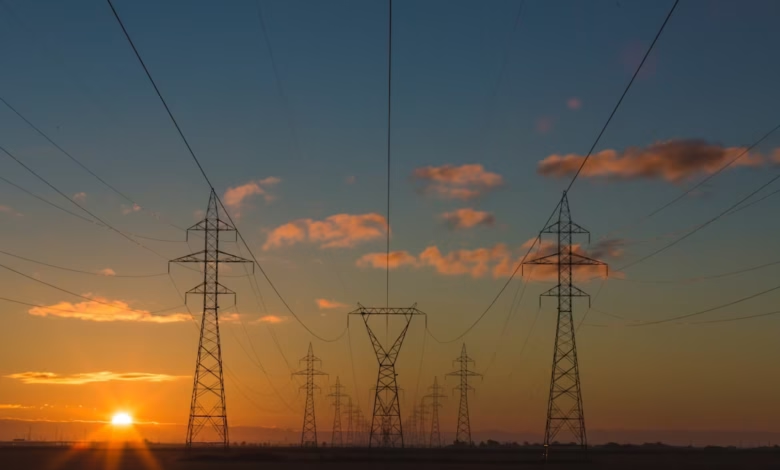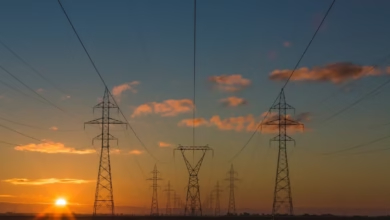Harnessing the Future: Innovations and Advancements in Energy R&D for a Sustainable Transition

As the world grapples with the urgent need to address climate change and reduce reliance on fossil fuels, energy research and development (R&D) has emerged as a critical driving force behind the transition to sustainable energy solutions. Innovations in renewable energy technologies, such as solar power and wind energy, are reshaping the landscape of energy markets, paving the way for a greener future. The integration of energy storage solutions is enhancing efficiency and security, enabling a more resilient energy system that can adapt to fluctuating demands and supply. Furthermore, energy R&D plays a pivotal role in informing global energy policy, fostering the adoption of advanced technologies like carbon capture and smart grids, and facilitating the shift toward distributed energy systems.
In this article, we will explore the latest advancements in energy technology, focusing on the potential of renewable energy sources, the importance of energy storage, and the influence of energy R&D on shaping sustainable energy markets and policies. As we delve into these topics, we will highlight how innovations in hydropower, bioenergy, thermal energy, and hydrogen energy are transforming the energy landscape, driving investments, and impacting energy transportation and exports. Join us as we navigate the dynamic world of energy innovations and examine their implications for a sustainable future in the face of global energy trends.
- 1. Innovations in Renewable Energy: Exploring the Future of Solar Power, Wind Energy, and Beyond
- 2. Energy Storage Solutions: Enhancing Efficiency and Security in the Transition to Green Energy
- 3. The Role of Energy R&D in Shaping Global Energy Markets and Policy for a Sustainable Future
1. Innovations in Renewable Energy: Exploring the Future of Solar Power, Wind Energy, and Beyond
As the world increasingly shifts focus towards sustainable solutions to combat climate change, innovations in renewable energy are at the forefront of this energy transition. Renewable energy technologies are evolving rapidly, particularly in solar power and wind energy, which are critical components of the global energy landscape.
Solar power has seen significant advancements in recent years, primarily in photovoltaic (PV) technology. Innovations such as bifacial solar panels, which capture sunlight on both sides, and perovskite solar cells, which promise higher efficiency at lower costs, are revolutionizing energy production. Additionally, the integration of solar power with energy storage solutions enhances energy efficiency, allowing excess energy generated during peak sunlight hours to be stored and used when demand is high. These developments not only contribute to energy security but also facilitate the decentralization of energy markets, empowering communities to generate their own green energy.
Wind energy is also experiencing transformative changes. The advent of larger, more efficient turbines has significantly increased energy output while reducing costs. Offshore wind farms are becoming increasingly viable, leveraging stronger and more consistent winds at sea. Innovations in smart grids and energy transportation are optimizing the integration of wind energy into the existing energy infrastructure, making it easier to distribute this clean energy across regions. Furthermore, as electric vehicles (EVs) gain popularity, integrating wind energy into EV charging stations is seen as a promising strategy for reducing reliance on fossil fuels.
Beyond solar and wind, other renewable energy resources such as hydropower and bioenergy are also undergoing advancements. Innovations in hydropower technology, including small-scale and run-of-the-river systems, provide opportunities for communities to harness local water resources without significant ecological disruption. Bioenergy, particularly in the form of biogas and advanced biofuels, continues to evolve, providing alternative energy sources that can complement other renewables.
The energy innovations emerging from these sectors not only drive energy investment but also reshape energy policy worldwide. As nations strive to meet their climate goals, understanding global energy trends and implementing effective energy policies will be crucial in fostering a sustainable energy future. Furthermore, the development of carbon capture technologies is being integrated into both renewable and traditional energy sources, ensuring that even as we transition away from fossil fuels, we can mitigate their environmental impact.
In summary, the future of renewable energy is bright, with innovations in solar power, wind energy, and other technologies paving the way for a more sustainable energy economy. As we look ahead, it is essential to continue investing in energy research and development (R&D) to unlock the full potential of these technologies and ensure a reliable, clean energy future for generations to come.
2. Energy Storage Solutions: Enhancing Efficiency and Security in the Transition to Green Energy
In the context of the ongoing energy transition, energy storage solutions play a pivotal role in enhancing efficiency and security as we move towards a greener energy future. With the increasing reliance on renewable energy sources such as solar power and wind energy, the intermittent nature of these resources poses a challenge for energy markets. Energy storage technologies, including batteries, pumped hydro storage, and thermal energy storage, are essential for balancing supply and demand, ensuring that energy is available when needed, thus improving energy efficiency.
Innovations in energy storage are crucial to facilitating a seamless transition from fossil fuels and nuclear energy to renewable energy. For instance, advancements in battery technology, such as lithium-ion and solid-state batteries, have significantly improved energy density and longevity, making electric vehicles (EVs) more viable and efficient. Additionally, these improvements in energy storage can help manage the fluctuations in energy production from renewable sources, ensuring that excess energy generated during peak production times can be stored and utilized later.
Energy storage also enhances energy security by providing backup power during outages and stabilizing the grid. The implementation of smart grids, combined with energy storage solutions, can optimize energy transportation and distribution, making it easier to integrate distributed energy resources. This integration helps to mitigate the risks associated with energy imports and exports, contributing to a more resilient energy policy that prioritizes local energy production and sustainability.
Furthermore, global energy trends indicate a growing investment in energy R&D focused on carbon capture technologies and hydrogen energy. These innovations not only support the reduction of greenhouse gas emissions but also bolster the reliability of energy systems during the transition away from fossil fuels. As the world grapples with climate change, the importance of energy storage in supporting a diverse energy portfolio—including hydropower, bioenergy, and offshore energy—cannot be overstated.
In summary, energy storage solutions are integral to enhancing the efficiency and security of our energy systems in the face of evolving global energy demands. By investing in these technologies, we can better manage the complexities of energy economics and contribute to a sustainable energy future that is resilient to the challenges posed by climate change.
3. The Role of Energy R&D in Shaping Global Energy Markets and Policy for a Sustainable Future
Energy research and development (R&D) plays a pivotal role in shaping global energy markets and policy, particularly as the world faces the pressing challenges of climate change and the transition to a sustainable future. The advancements in energy technology are not only transforming how we generate and consume energy but also influencing the dynamics of energy economics, energy security, and energy efficiency across the globe.
One of the most significant impacts of energy R&D is the acceleration of renewable energy technologies, such as solar power, wind energy, and hydropower. These innovations are crucial for reducing reliance on fossil fuels and promoting a low-carbon future. As countries invest in energy storage solutions and smart grids, the integration of distributed energy resources becomes increasingly feasible, allowing for greater flexibility and resilience in energy markets. This transition not only enhances energy security but also facilitates the growth of green energy sectors, making them more attractive for energy investments.
Moreover, energy R&D is instrumental in informing energy policy by providing data-driven insights into energy trends and the effectiveness of different energy strategies. For instance, advancements in carbon capture and hydrogen energy technologies are being closely monitored by policymakers as they seek to implement regulations that favor clean energy sources. This growing emphasis on sustainable practices is also reflected in the rising demand for electric vehicles and bioenergy, which are reshaping transportation and agricultural sectors, respectively.
The ongoing energy transition necessitates a comprehensive understanding of energy markets, including the balance of energy exports and imports. Countries with abundant renewable resources are increasingly positioning themselves as leaders in energy exports, reshaping global energy trade dynamics. Conversely, nations reliant on fossil fuels must navigate the economic implications of transitioning to greener energy solutions, ensuring that energy investments align with long-term sustainability goals.
In summary, energy R&D is vital for driving innovations that not only enhance energy efficiency but also pave the way for a sustainable energy future. By investing in cutting-edge technologies and developing informed energy policies, nations can effectively navigate the complexities of global energy markets while addressing the urgent need for climate action. As we look ahead, the role of energy R&D will undoubtedly remain central to achieving a resilient and sustainable energy landscape.
In conclusion, the landscape of energy research and development is evolving rapidly, driven by a commitment to achieving a sustainable future. Innovations in renewable energy technologies—such as solar power, wind energy, hydropower, and bioenergy—are paving the way for a significant shift away from fossil fuels. Coupled with advancements in energy storage solutions, these innovations enhance energy efficiency and security, supporting the global energy transition towards greener alternatives.
As energy markets adapt to these changes, the role of energy R&D becomes increasingly crucial in shaping effective energy policy. This involves not only harnessing existing technologies like nuclear energy and thermal energy but also exploring new frontiers such as hydrogen energy and carbon capture. The integration of smart grids and distributed energy systems is essential for optimizing energy transportation and ensuring stability in an increasingly complex energy ecosystem.
With ongoing energy investment and a focus on climate change mitigation, the future of energy economics looks promising. By prioritizing energy innovations, we can bolster energy security while navigating the challenges of energy imports and exports on a global scale. Ultimately, a collaborative approach among policymakers, researchers, and industry leaders will be key to driving the advancements necessary for a sustainable energy future that meets the demands of electric vehicles and beyond.
References:
(Include relevant sources here)





